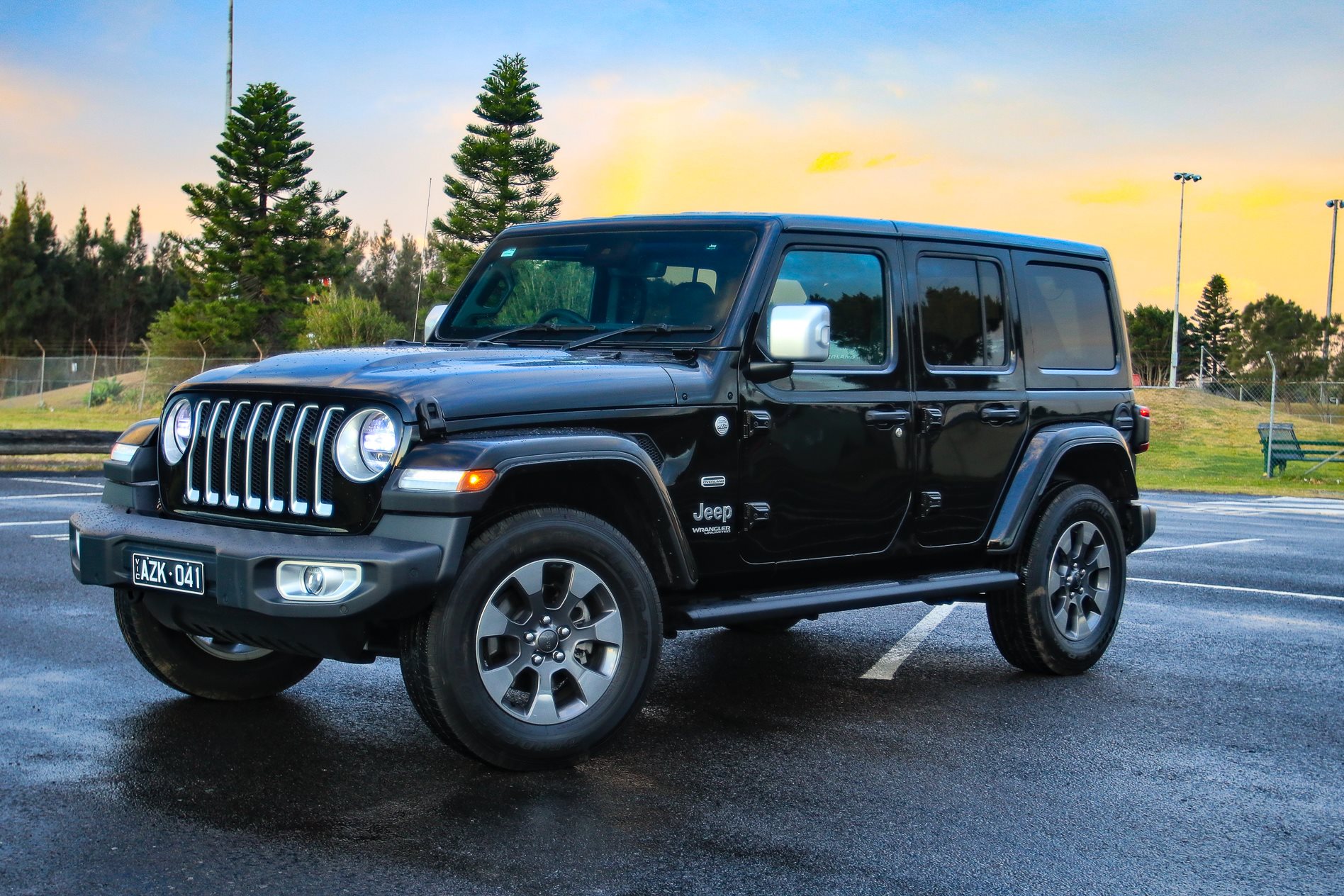
Things we like
- A unique beast in many ways
- California cool with roof panels removed
- Decent enough cruiser
Not so much
- One-star safety rating
- Indicator/wiper stalk design
- Ageing engine is thirsty
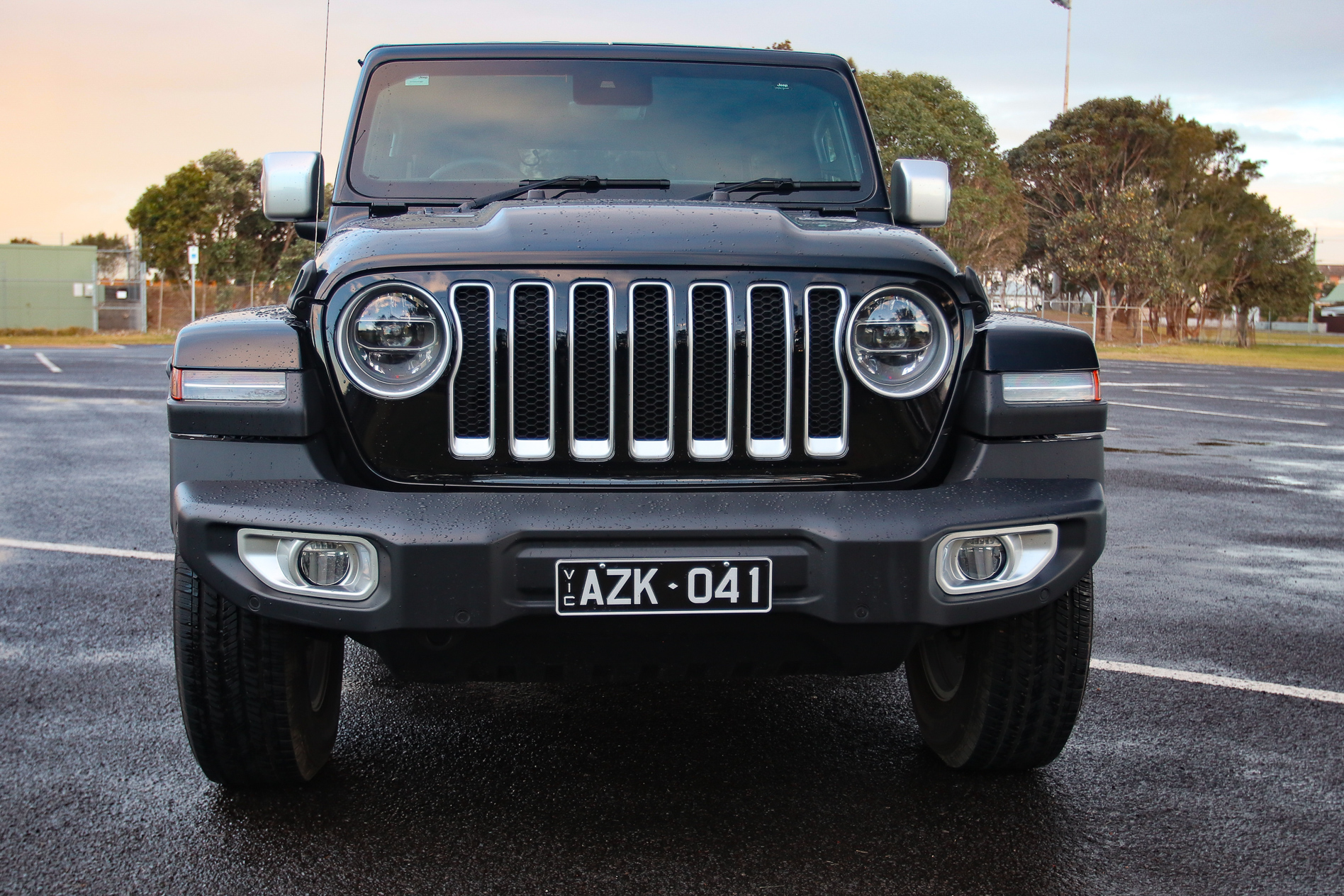
What is the Jeep Wrangler Rubicon?
When it comes to iconic names in the motoring game, ‘Wrangler’ holds a special place in the hearts of those who live to get muddy.
Now in its 33rd official year (the name was coined in 1987, even though it’s spiritually descended from the World War II Willys army vehicle of the same shape, the Wrangler 4×4 is the very essence of the Jeep brand, and as vital to its identity as the 911 is to Porsche.
The Overland version, meanwhile, offers up the greatest level of luxury available within the Wrangler line-up.
The gestation of the fourth-generation Wrangler hasn’t been easy, though, with safety bodies in Europe – and subsequently Australia – handing the Wrangler a desultory one-star safety rating for a lack of active safety gear.
We’ll always recommend that you buy a car that’s as safe as it can possibly be, but a low ANCAP score isn’t going to stop people buying into the Jeep legacy.
Its off-road prowess is renowned, but how does it handle the cut and thrust of the urban jungle?
What is the Jeep Wrangler Overland like to drive?
We had a pretty big stint in the Wrangler Overland Unlimited four-door, covering more than 1500km over the course of a few days in around Sydney’s dystopian traffic nightmare.
Of course, the Wrangler isn’t designed exclusively for this kind of work but, much like a mountain bike, it can do double duty away from dirt roads.
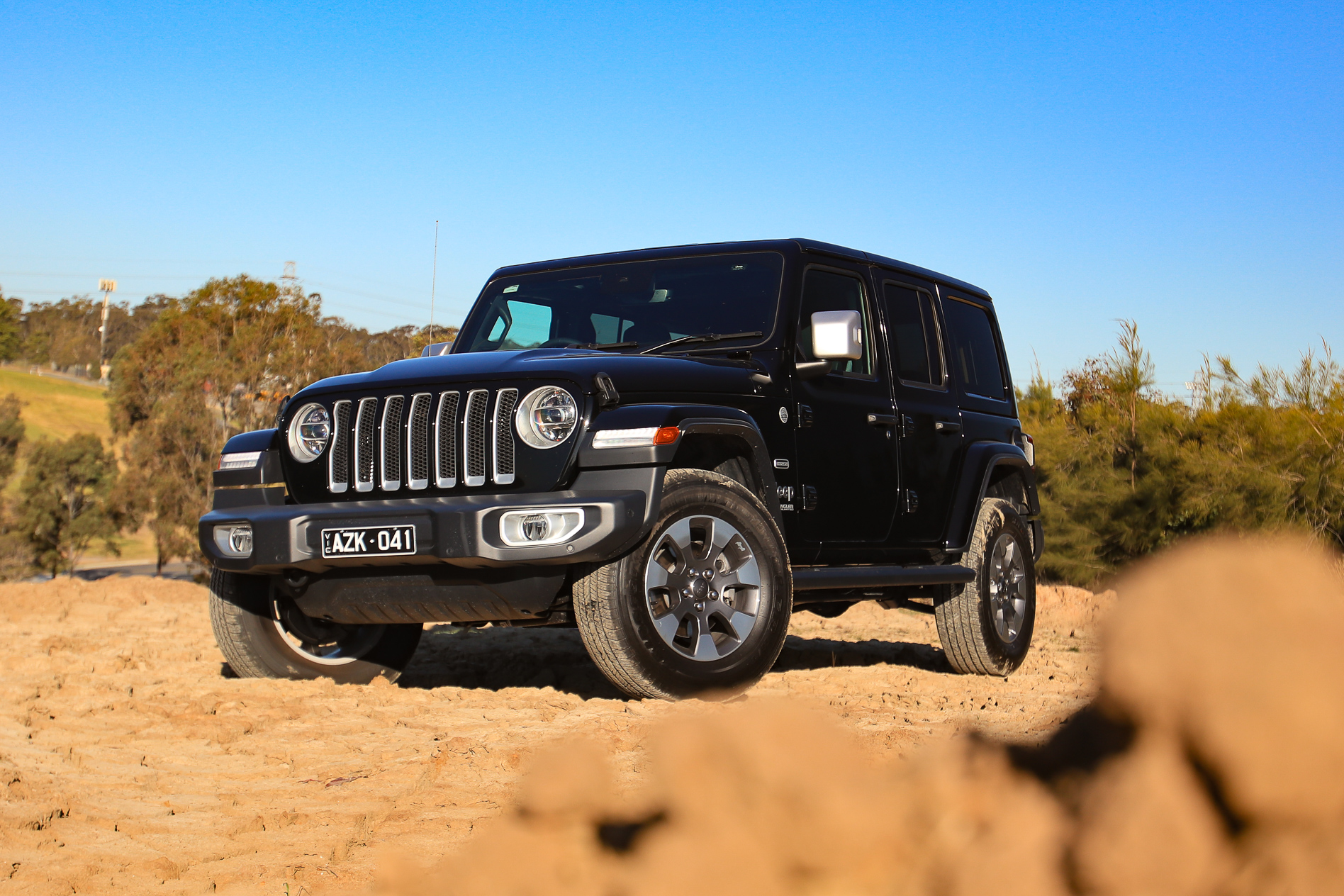
Straight away, though, the new Jeep – known as the JL – doesn’t feel the same as the previous generation JK. Its steering feel is wooden and largely unresponsive, which is a change from the almost civil behaviour of the previous JK.
My default reference for these kinds of cars is – or was – the truly terrible Land Rover Defender, and while it’s nowhere near as awful as that dreadful land yacht, the JL Wrangler feels like a step backwards when it comes to on-road civility.
Part of that feeling comes from the sense that the Wrangler isn’t keen to settle down on the road. Its suspension takes a bit of time to take a set, so you almost have to predict where the car will end up after a lane change.
This is down to the live-axle style suspension which, while providing loads of off-road ability, isn’t as precise as more on-road biased multilink and strut systems.
It pitches under braking, too, meaning that the nose drops noticeably enough for your passengers to question your driving talents – or lack thereof.
The Jeep is tough to manoeuvre in tighter spaces thanks to a higher-than-average turning circle, and the bluff bonnet and restricted rear view can confound vision.
The ageing 3.6-litre Pentastar six-cylinder petrol engine is decent enough but it’s quite thirsty, and the 209kW, 347Nm engine is starting to feel its vintage, with a relatively gruff character underpinning its naturally aspirated performance.
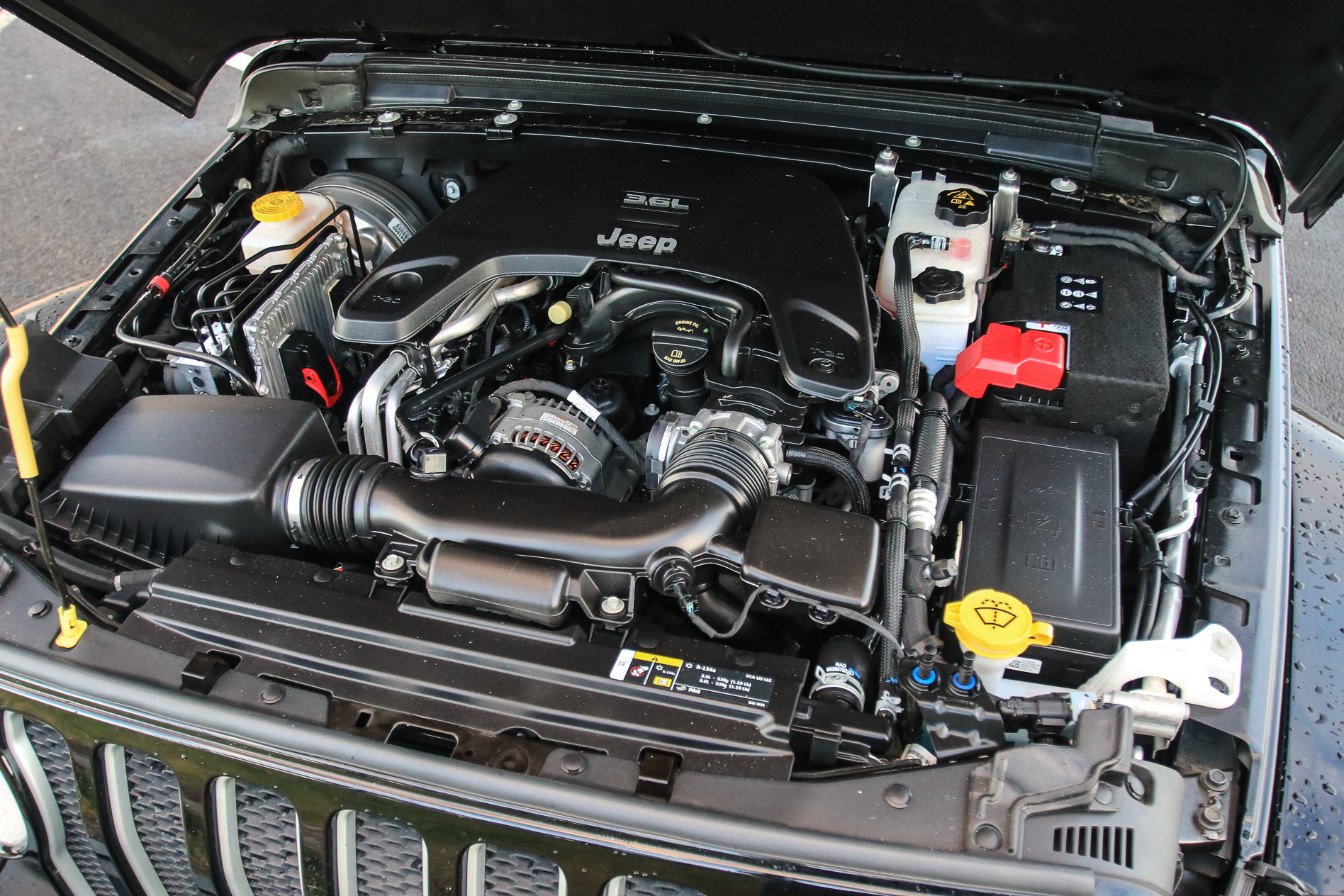
Its 10.3 litres/100km combined fuel economy claim blew out a little over the course of our test, with a figure of 12.4l/100km coming from our 1500km of testing.
What’s the Jeep Wrangler Overland like to live with?
The five-seat, four-door Wrangler is unlike almost any other vehicle, thanks mainly to its Transformer-inspired ability to change into a few different forms.
In standard trim, its’s a large, boxy SUV with decent interior space and cargo-carrying ability, and it’s also pretty high on the novelty scale, thanks to its flat centre console, dash and folding windscreen.
Its basic structure means that the roof panels can be relatively easily popped out, though if it suddenly rains, you’re getting wet – it’s not the work of a moment to reinstall them.
Large Alpine speakers in the pillars add to the party vibe, while a plethora of charging points – including a 230v socket, USB and USB-C charging sockets – and rear air vents add to the creature comforts.
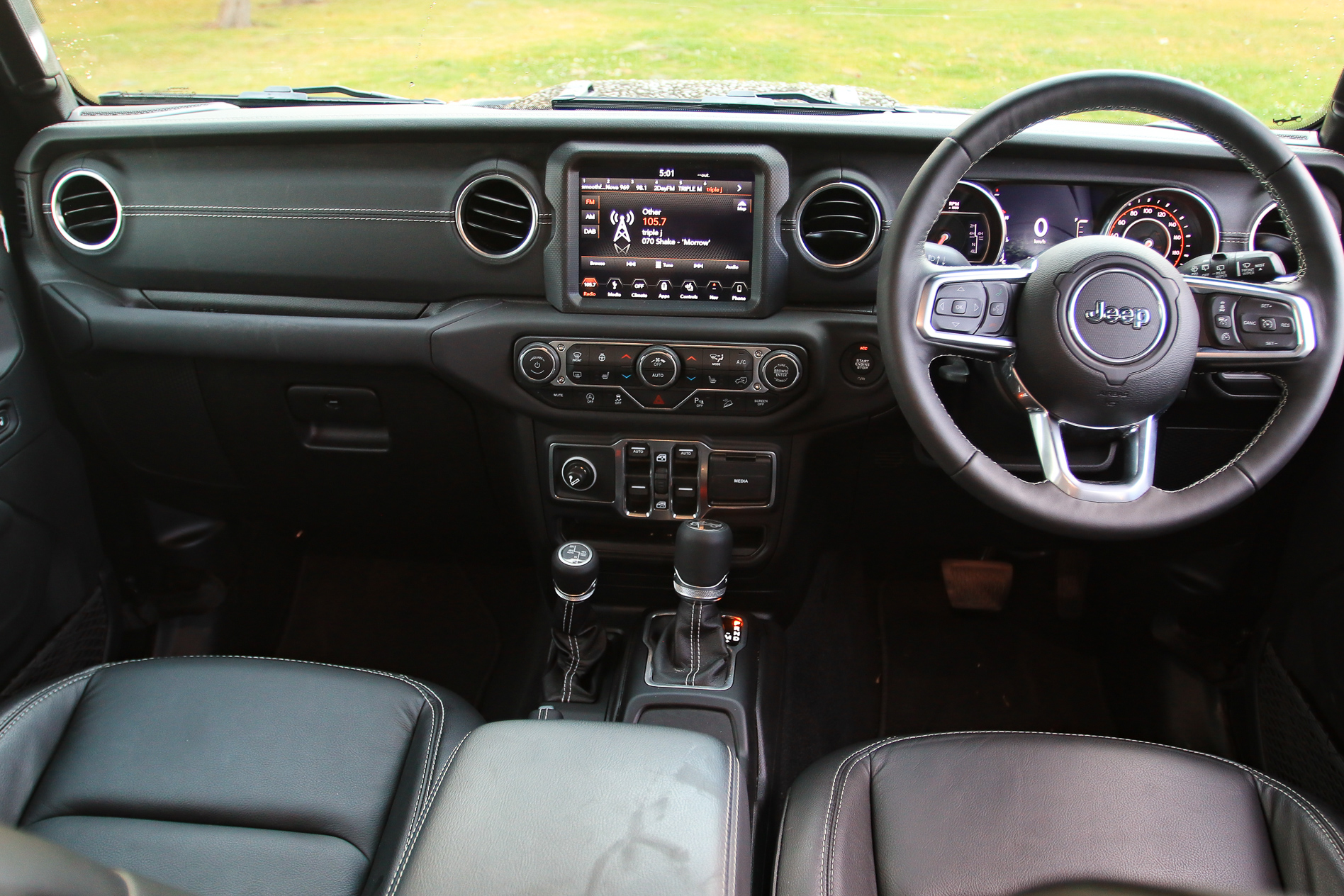
A deep centre console bin mostly makes up for a lack of under-dash storage, but there’s no ability to store bottles in the doors. There are nets on the doors, but they aren’t very big.
Two baby seats can be added via ISOFIX baby seat mounts, while there are three top-tether mounts for the second row of seats.
With the seats up, cargo volume measures out at a very generous 897 litres, expanding to 2050 litres with the seats laid (almost) flat. Our tester came equipped with a $350 alloy rail system in the rear cargo floor, which allows for easier load tethering.
Downsides? The indicator and wiper stalks are mounted a surprisingly long way inboard of the steering wheel, making it a stretch to use them, while the generous headroom can be curtailed by those rollover bars that dominate the interior design.
Wind noise from that bluff nose and windscreen, as well as the large side mirrors, is also quite horrendous.
The window switches on the centre console aren’t ideal for mine, and neither is the lack of a left-side footrest, but the leather interior is a nice touch to deal with kid spills. Carpet in an offroader, though? Not a great idea.
On the upside, exposed bolt heads, satin finish metals and exposed door hinges tie the Jeep to its past to give the Wrangler an industrial vibe that sets it apart from the pack. It’s a great blend of old-school and new-school when it comes to design.
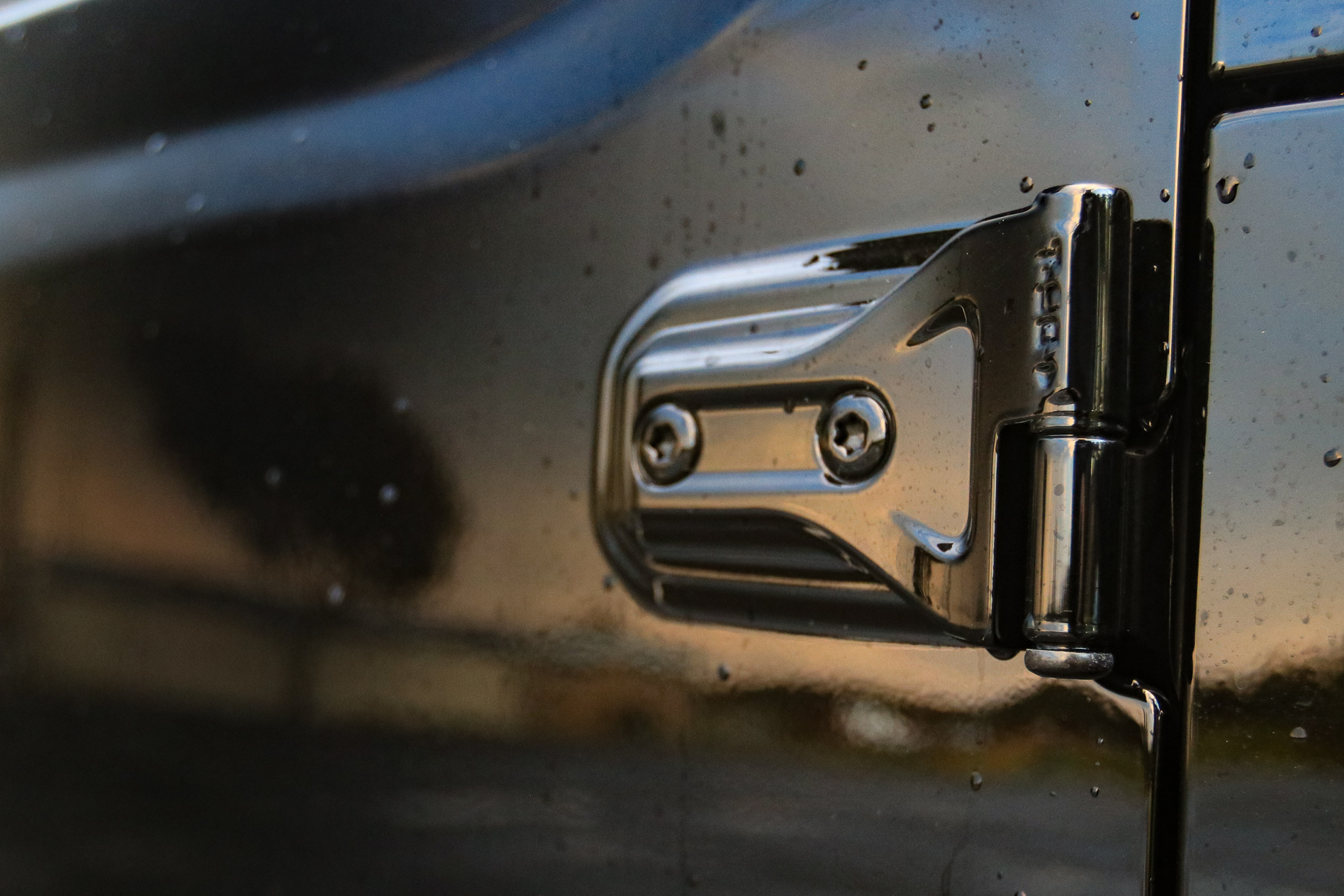
Is it worth the money?
The Wrangler Overland Ultimate sits below the range-topping Rubicon, and in four-door trim it costs $62,950 plus on-road costs.
Spending this much nets a host of equipment, including LED headlights and taillights, 18-inch rims, leather interior, Jeep’s best Uconnect 8.2-inch touchscreen-based multimedia system, colour-coded removable roof panels and safety kit that includes autonomous emergency braking and blind spot monitoring with rear cross-traffic detection.
Mechanically, the Overland gets the top-spec Select-Trac 4×4 system which offers both two-wheel drive and 4×4 high- and low-range drive, along with the 3.6-litre Pentastar V6 petrol engine that’s mated to an eight-speed automatic transmission.
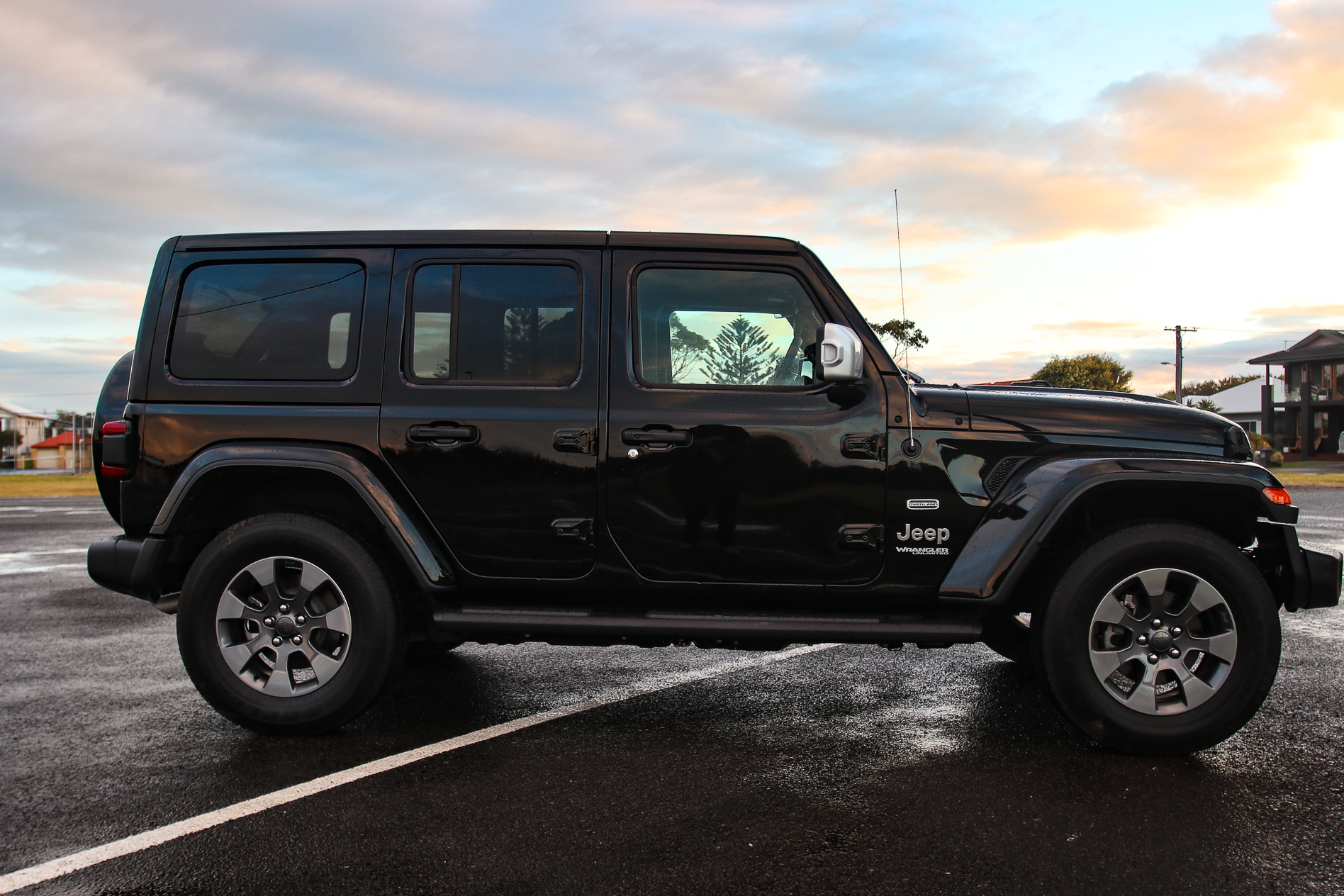
There aren’t too many competitors for the Wrangler, such as it is; 4×4 wagons like the Isuzu MU-X or Mitsubishi Pajero Sport come closest, in that they offer off-road ability and decent on-board space.
However, the Wrangler’s poor safety rating – just one star, thanks to a lack of now-required active safety systems in the main – is a concern, though Jeep will point to the Wrangler’s intended off-road design parameters as a reason it didn’t score as well as it should.
Against other five-seat off-road-capable wagons, the Jeep is expensive, but if your heart is set on living the Wrangler life, price won’t really be a factor.
Things we like
- A unique beast in many ways
- California cool with roof panels removed
- Decent enough cruiser
Not so much
- One-star safety rating
- Indicator/wiper stalk design
- Ageing engine is thirsty



